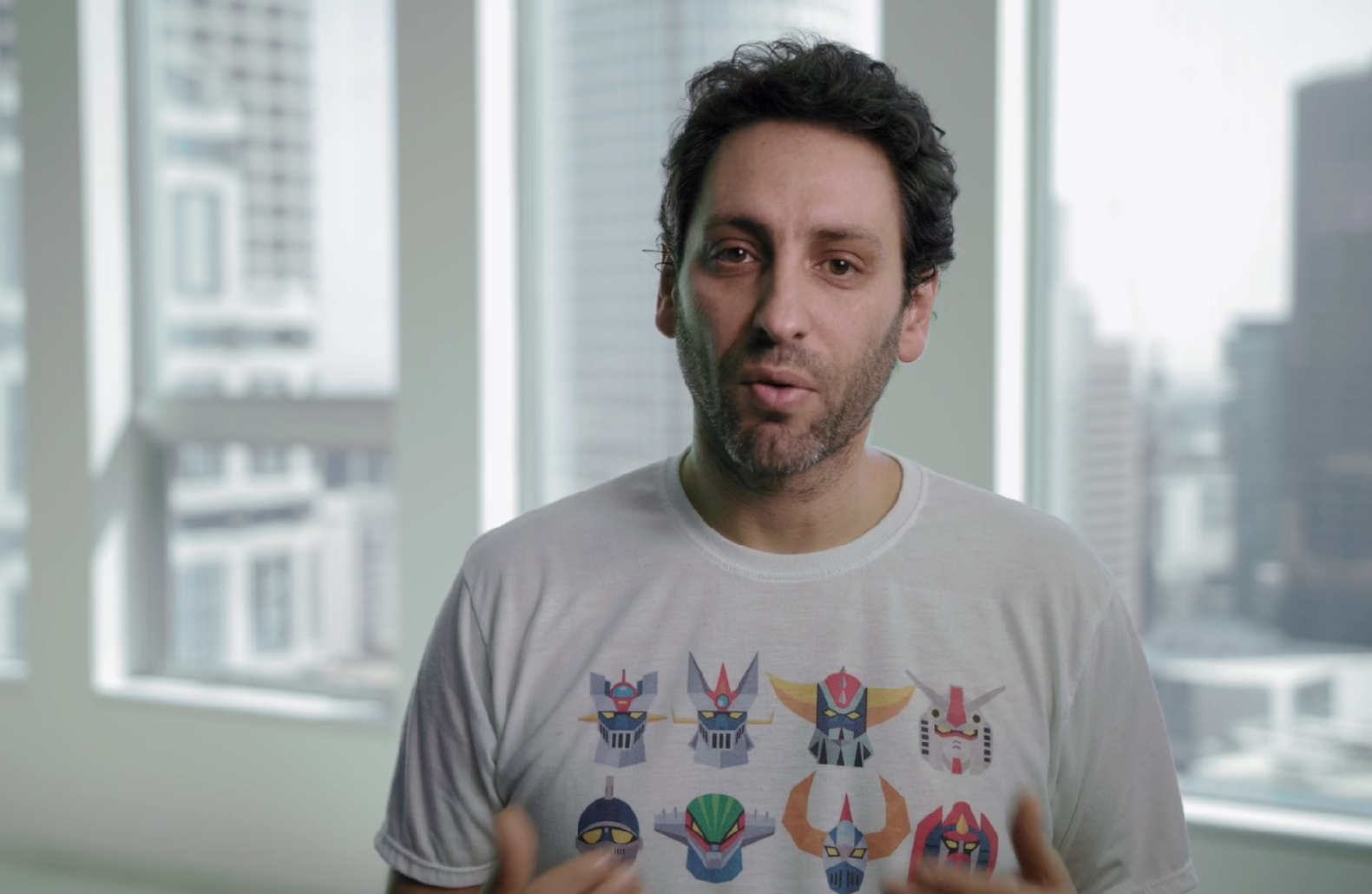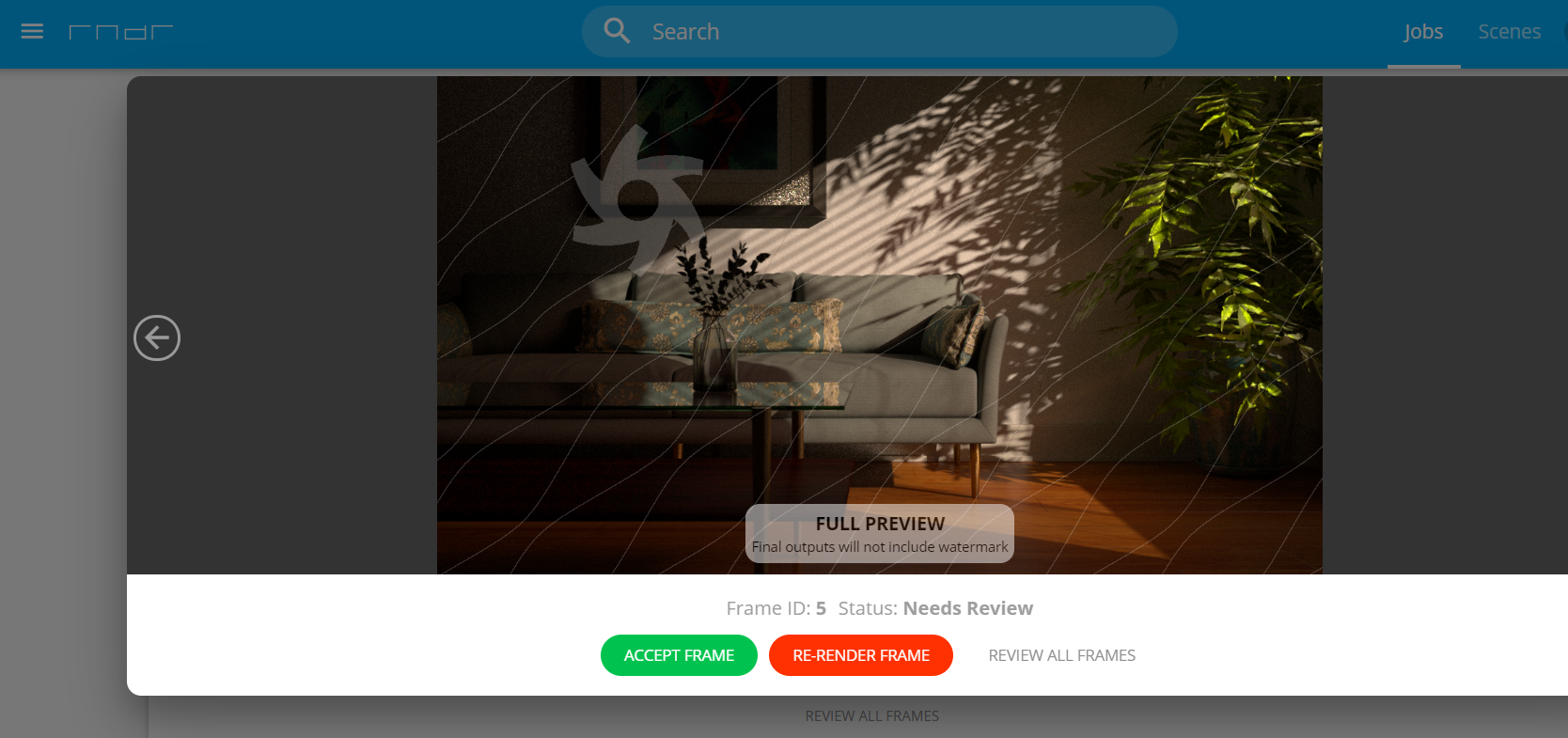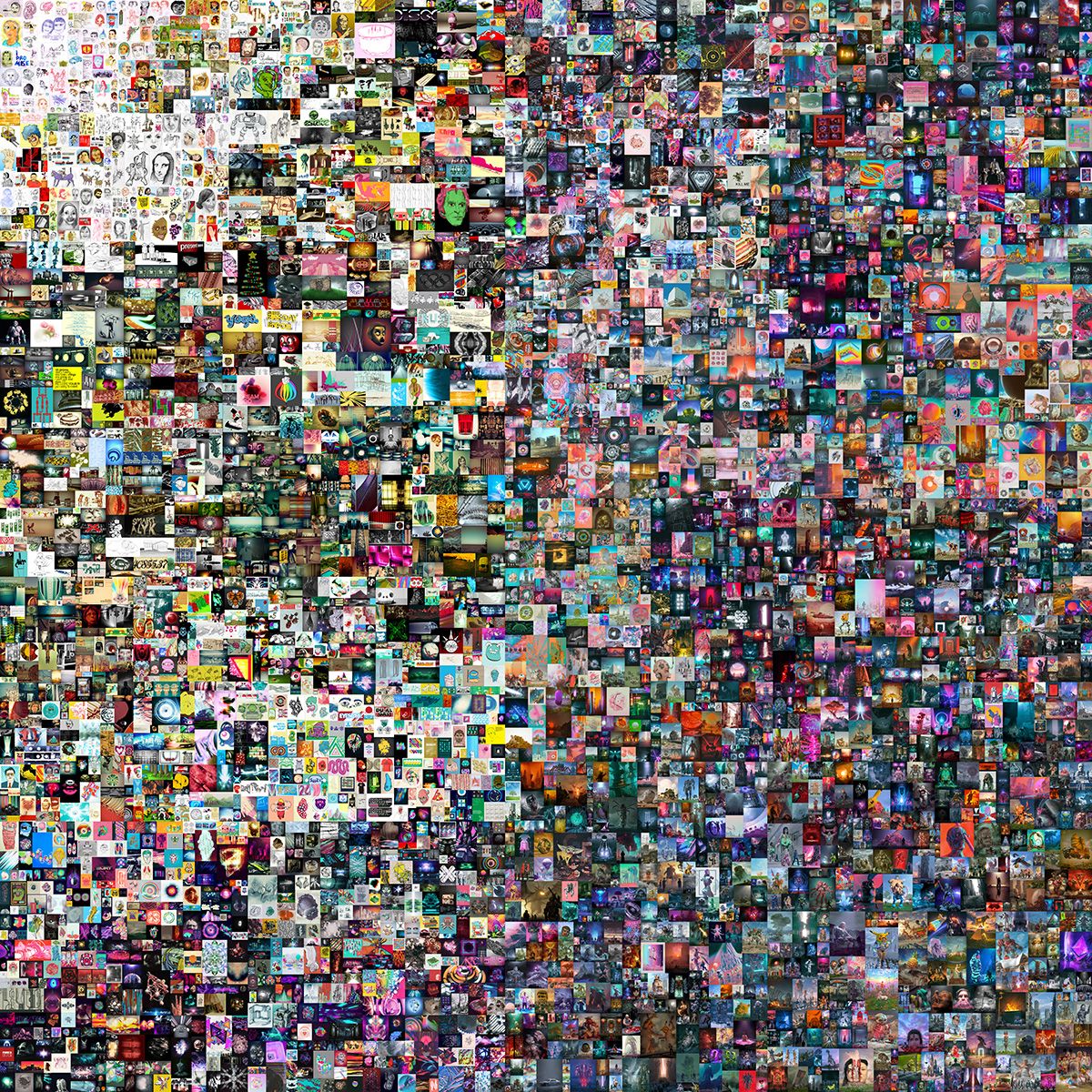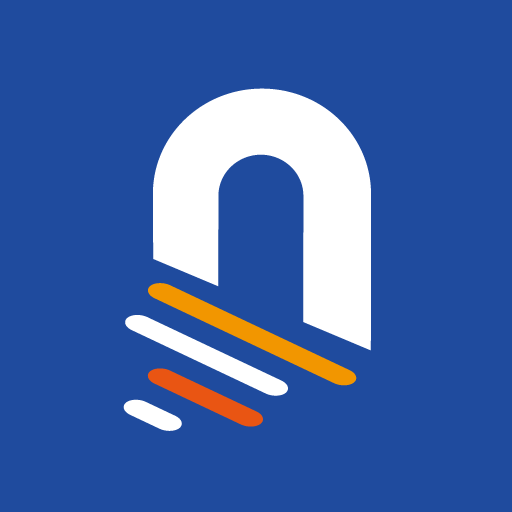Translated by CoinYuppie
The collision of technology and art has made NFT (Non-Homogenized Token) burst into popularity and move to the center of the crypto stage. With it, various applications have gradually accelerated, large companies or well-known IPs have been testing the waters, and various capitals have been competing to enter. Although the NFT craze seems to have cooled down recently, the imagination it may carry in the future continues to spread.
In the process of various applications emerging from the NFT market like the Cambrian explosion of life, the world’s first blockchain-based distributed rendering network RNDR (Render Token) has become the “NFT creation camp” and helped many works “debut”. “The Render Token (RNDR) is the world’s first blockchain-based distributed rendering network. Recently, PANews interviewed Jules Urbach, founder and CEO of OTOY and RNDR, to talk about how this distributed rendering project with hundreds of thousands of users can grasp the big opportunity under the industry boom? What makes it so popular among popular crypto artists like Beeple and Pak?

Jules Urbach
Crypto art is booming, and veteran players are entering to help render their work
As a bridge between the real and virtual worlds, new use cases for NFT are emerging and the market is growing by leaps and bounds, and crypto art is bringing the NFT story to a climax with one high-priced auction after another. As of June 25, the current total value of crypto art has exceeded $600 million, and data from NonFungible shows that in the first quarter of this year alone, art NFTs accounted for half of the entire market, with a 43% share.
Unlike traditional artworks, most digital artworks involve computer-generated imagery (CGI), while rendering is a necessary step for the computer to ultimately generate images and bring works to life based on models and parameters set by the creator. In the process of moving from reality to the virtual world, the RNDR rendering network, a trendsetter in crypto art, is becoming the secret weapon of artists.
In the RNDR rendering network, artists can simply upload files and set task parameters through a simple interface, and then call on the computing power of thousands of P2P nodes to render faster and cheaper than cloud rendering farms. After that, the artist can generate the rendered work as an ERC-721-compliant NFT.
While there are few rendering tools on the market, achieving photo-realistic renders also means a high cost and a longer time. For example, the movie “Spider-Man 3” cost $258 million to produce, including special effects costs of more than $155 million; “Pirates of the Caribbean 3” cost $342 million to produce, special effects costs up to $200 million. It can be said that “every frame is a high amount of money in the roar”.
For most artists, such high costs are an invisible barrier to their talent. Octane Render is the world’s first and fastest GPU-accelerated, physically correct renderer, and is widely used by leading visual effects studios, artists, animators, designers, and artists. artists, animators, designers, architects and developers, and has been used in Star Wars, Westworld, The Crown, and many other well-known films and television productions.
At the same time, RNDR makes it easy for creators to access hardware capabilities comparable to Hollywood studios and render at a lower cost by distributing GPU rendering tasks to thousands of P2P nodes, and participating nodes are rewarded with RNDR tokens. These tokens can not only be withdrawn to exchanges for cashing out, but can also be used for rendering work, software service purchases, and other related functions, including giving artists higher priority for their rendering tasks through Staking tokens.
Jules Urbach said in an interview that RNDR decentralized rendering is 10 times more efficient compared to the efficiency that can be steadily obtained on centralized public GPU cloud services. And for users who value cost, RNDR also offers a more affordable third tier service that is 10 times less expensive than centralized cloud services. Of course, these are just the tip of the ice, and in the future the RNDR rendering network hopes to increase rendering efficiency by another order of magnitude, thus giving it an even greater advantage over existing traditional methods.

RNDR creator platform (https://account.otoy.com/) interface (preview and confirmation of rendered frames)
Not only that, but in the past, artists also often faced the problem of piracy and infringement, and it was very difficult to trace and prove, and even in the current NFT market, there is a lot of chaos in using copies for casting, while the blockchain-based RNDR is able to provide artists with a deep level of verification that no other network or platform can provide, including not only the casting of NFT, but also the entire rendering process in the creation of the work. This includes the original 3D files in the scene map uploaded to RNDR by the artist, the actual rendering work (i.e. sampling function), and the metadata of the rendering task, which not only can effectively prove the authenticity of the work, but also leaves room for the artist to recreate the work in the future.
In addition to providing more powerful and low-cost rendering capabilities, the RNDR rendering network can also allow NFT creations to fly into the common people. On the one hand, cryptocurrency is still a high barrier for the general public, and artists can purchase RNDR credits from the RNDR rendering network through PayPal or Stripe to render their works; on the other hand, although many NFT platforms such as MakersPlace and SuperRare currently support the creation of NFTs, the higher On the other hand, although many NFT platforms such as MakersPlace and SuperRare currently support the creation of NFTs, the higher handling fee and congested network brought by Ethernet greatly affect user experience. By implementing Polygon, a scaling solution, RNDR can significantly reduce transaction costs and time, and to a greater extent reduce the environmental impact of interacting with the Ether ecosystem.
“We are working on compatibility with more public chains or DApps, including Decentraland, BAT, Algorand and many other projects.” Jules Urbach revealed that next year, the RNDR Rendering Network will also work with NFT platforms, creators and virtual worlds such as Decentraland to introduce next-generation services and NFT across the blockchain ecosystem.
It is worth mentioning that the RNDR Rendering Network also introduces a marketplace for buying and selling other 3D content and services, as well as an SDK (software development kit) that allows third parties to develop their own software APPs and modules on RNDR.
In other words, RNDR not only lowers the threshold for artists to create, making powerful rendering power “at your fingertips”, but also protects creators’ personal rights, and will provide many one-stop creation and trading services. However, Jules Urbach also said that network expansion and operational issues are still a major hurdle.
The RNDR rendering network is becoming a base for NFT creations at a time when crypto art is all the rage.
Will work with Beeple to develop a new generation of holographic NFT
With powerful features and a better user experience, RNDR rendering network is attracting more and more crypto artists in this wave of NFT boom.
In the past few months, famous crypto artist Beeple, well-known artist and programmer Pak and NFT field pioneer Carlos Marcial have spoken up for RNDR as a loyal fan. Beeple, the third most expensive living artist in the world, is a member of the RNDR Rendering Network Advisory Board and used the OctaneRender renderer to create most of the work in The First 5000 Days, which sold at Christie’s for $69.35 million.

Beeple: ‘The First 5000 Days’
“Beeple has been using our OctaneRender software for nearly 10 years and has used Octane for almost all of his daily creations for the past 8 years. With OctaneRender, Beeple has changed the social media landscape and started the ‘Everyday’ movement in digital art, transforming the way creators work and laying the groundwork for the current NFT movement, making Beeple the perfect choice to partner with the RNDR Rendering Network. As an advisor to the RNDR Rendering Network, we will upload Beeple’s life’s work to the RNDR Rendering Network archive, which will be fully documented and tokenized on RNDR. We will also work with Beeple to launch a new generation of NFTs that will use our holographic rendering and playback products to introduce the first fully holographic NFTs on the RNDR blockchain, which will allow Beeple’s work to move from 2D and 3D displays to a new generation of holographic displays. These next generation holographic NFTs will be an important turning point for NFTs to be used on a large scale.” Jules Urbach said.
As Jules Urbach notes, RNDR will work with Beeple to develop the first blockchain NFT capable of being displayed fully immersively on a holographic display or mobile AR, while Beeple will also chain his life’s work on RNDR, creating a dynamic archive of his personal work. These works will all be deeply copyrighted and verified on the RNDR blockchain network, allowing for recombination and secondary creation.
And in addition, the RNDR rendering network has announced a partnership with legendary Marvel and DC illustrator Alex Ross, for whom an RNDR archive containing his life’s work will also be created and released as a unique RNDR NFT. This NFT will contain media-rich content ranging from hand-drawn sketches to 3D renderings and virtual reality presentations, and will be the first superhero-themed NFT released by Alex Ross.
Although NFT is out of the loop, it is still a niche market compared to the cryptocurrency space as a whole, and even the traditional space. In order to attract more creators to participate and further advance NFT, ecologically, the RNDR rendering network is exploring integration with a number of large companies, including studios and large media companies, among others, in the hope of bringing them into the blockchain and NFT space.
In terms of tools, in addition to OctaneRender, Jules Urbach told PANews that the RNDR Rendering Network will also launch a multi-renderer initiative to introduce third-party renderers such as Arnold Render, as well as real-time rendering tools from OTOY via the RDNR Software Development Kit (SDK), including The former will help RNDR reach more large-scale Hollywood studios in the visual effects space, while the latter will help it reach billions of game developers.
In this way, the RNDR rendering network, which has captured the hearts of popular crypto art leaders, is helping NFT move to a bigger stage.
Metaverse is still in its early days, and rendering will become a core requirement
“This is the ‘Oasis’ world, where the only limit is your own imagination.”
In the movie “Top Gun”, the main character puts on a VR device and instantly enters a virtual game world “Oasis”, which is born out of the real world and parallel to it, and is always online. The “oasis” depicted by director Steven Spielberg is also an important demonstration of the Metaverse (metaverse), a concept that has become a big hit this year.
In recent months, the Metaverse, a “sci-fi” concept, has been hotly debated in the tech and VC circles, with Facebook CEO Mark Zuckerberg saying the concept will disrupt human society, Google co-founder Sergey Brin believing it is something that will happen soon, and big companies like Tencent and Byte recruiting. The year 2021 is already the year of the Metaverse.
NFT is seen as the most logical path to the Metaverse, and the combination of the two is showing great potential. nonfungible.com data shows that as of June 25, the current overall NFT market has a monthly transaction volume of over $56 million, with the Metaverse trading at $9.6 million per month, accounting for 17.1 percent of the market share.
“While Metaverse is the buzzword of the year, the concept has been integrated into the design of the RNDR rendering network since its launch in 2017, and it’s part of the vision I’ve continued to develop OctaneRender to achieve during my ten years at OTOY, so I don’t see the concept as a passing hype. Instead, the Metaverse at this stage is just the tip of the iceberg, and we want to be able to ensure that the Metaverse is an open and decentralized world where no company or organization should have a monopoly.” Jules Urbach thinks about the concept that has quickly shot out of the ring.
While having chemistry with NFT, the rendering industry is also an important infrastructure industry for the Metaverse. The RNDR rendering network sees a “place” for it in the Metaverse.
Regarding the future of the Metaverse, Jules Urbach told PANews, “As stated in the RNDR Rendering Network vision, we want to build a decentralized economy around interconnected 3D content. As such, the RNDR Rendering Network is committed to establishing open standards and interoperability in the 3D ecosystem, allowing people to explore the metaverse without friction, rather than having as many siloed platforms and networks as the web does today. For this goal, the RNDR Rendering Network focuses on contributing our ORBX scene graph format to the ITMF (Immersive Technology Media Format) standard and using it to serve the next generation of NFT services. In our opinion, ORBX scene maps can help NFT move from simple static objects in JPEG and MOV files to fully dynamic works in AR and VR. Only with fully portable, tokenized scene graph data can we achieve a fully immersive Metaverse.”
In the RNDR Rendering Network’s view, holographic and AR media will be the bridge between the physical world and the decentralized Metaverse, so they are actively developing all the features that will drive this new generation of media, including allowing people to cast the first fully holographic and immersive NFT. and with rendering at the heart of the Metaverse, the RNDR Rendering Network believes that by making GPU rendering masses and introducing more and more real-time rendering tools through the RNDR SDK, it will enable a wider range of creators to participate in the Metaverse.








